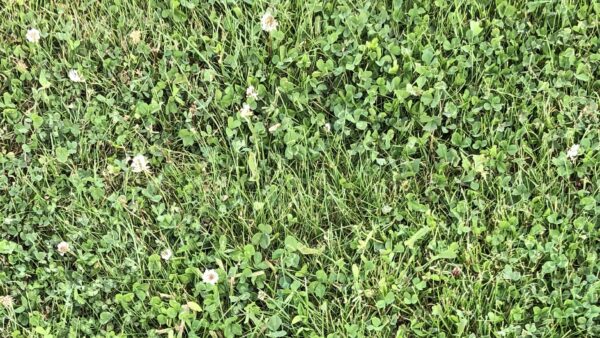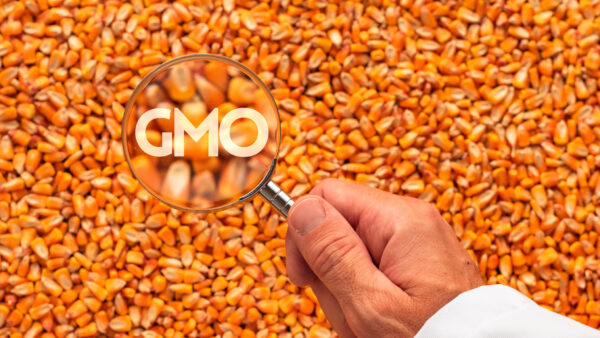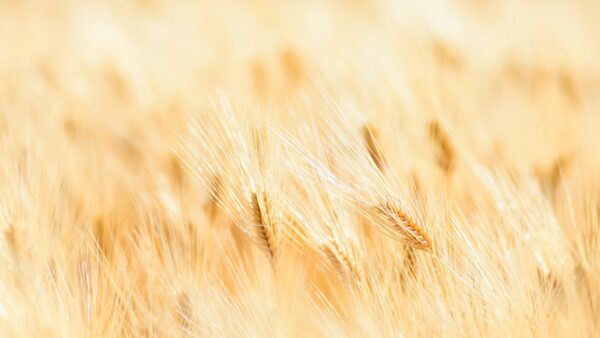Of the worlds sugar production, about 20% comes from beet sugar, with the other 80% produced from sugar cane. According to the FAO, in 2018, a little over 4.8 million ha of sugarbeet were harvested, which were distributed as follows: EU-28 (EU): 1.7 m ha; East Europe (EE): 1.5 m ha; North America (NA): 0.5 m ha; Rest of the world (ROW): 1.1 ha. All together the hectares produced 275 million tonnes of sugar beets. The largest producing countries were Russia, France, U.S. Germany and Turkey. The EU is the world’s leading producer of beet sugar, with around 50% of the total amount produced.
The northern half of Europe is where most of the EU’s sugar beet is grown, as the climate is more suitable. Europe’s most competitive producing areas are in northern France, Germany, the Netherlands, Belgium and Poland. Besides sugar beet production, the continent also has an important refining industry that processes imported raw cane sugar. To learn more about this crop, European Seed spoke with Henning Friehe, Product Manager, of Betaseed Gmbh in Germany, Hendrik Tschoep, R&D Director at SESVanderHave in Belgium, Dr. Michael Stange, Head of Product Management Sugarbeet at Strube D&S GmbH in Germany, Mr. Christophe Verlaine, General Director of Kuhn & Co International B.V., in The Netherlands and with Dr. Andreas Loock, Head of Breeding Sugarbeet, KWS in Germany.
BREEDING TARGETS
The breeders of our company are very clear about their selection goals, says Verlaine. “First of all, we need as much white sugar yield per hectare as we can get. We select on the key parameters which determine the sugar yield: root yield and sugar content.” Secondly, he says a strong focus on heat and drought stress and water use efficiency. The last goal is to be on the lookout for diseases: Sclerotium rolfsii, beet cyst nematodes, Rhizoctonia solani and Cercospora beticola.
Betaseedt argets its markets each in a unique way, says Friehe. “Different environments and

growing conditions require varieties with particular characteristics which, through breeding, we aim to strengthen. This approach allows us to offer the strongest tailor-made varieties for each market. The biggest challenge however, is to find the right balance between the resistance-level and yield.”
According to Stange, the main targets are yield characteristics, mainly sugar yield and sugar content, and resistances/tolerances against the main pests and disease like Rhizomania, nematodes and leaf diseases like Cercospora beticola and powdery mildew. “Besides this, there are virus diseases like Virus yellows which is transmitted by aphids. Another very important focus is yield stability between environments and years,” he says.
The No. 1 target remains the intrinsic sugar yield, says Tschoep. “Biotic and abiotic stresses are important and will have an increasing importance for the next decade,” he explains. “The reduced availability of plant protection products (PPPs) in combination with climate change will lead to more direct and indirect damage caused by insects. A large amount of the solutions against these pathogens can and will come from breeding, and we will continue to search for more robust varieties.”
According to Loock, more than 350 professionals in breeding and research currently work at KWS for the development of new sugar beet varieties. “Their tools are state-of-the-art methods, such as cell & tissue culture, marker-assisted selection, genomic prediction, digital phenotyping, bioinformatics. But also a global network of 16 breeding stations and more than 40 trial sites. Our company invests more than €60 million per year in the development of new sugar beet varieties. Such investment comprises 50 breeding and research projects which cover a multitude of breeding targets.”
DIFFERENTIATING USES
Stange states that for each target, there is a defined way to test it in the field, in the lab, or in greenhouse. Especially resistance and tolerance characteristics can be tested with molecular markers whereas yield characteristics must be tested in field trials. “Furthermore, the tolerance and resistance level can be tested in bioassays and in field trials.”
Loock says sugar beet cultivation feeds various value chains, as they:
(1) are used for the production of sugar and ethanol
(2) serve as substrate for biogas plants and
(3) form one valuable feedstock in livestock farming.
“While most of the agronomic breeding targets are the same such as abiotic & biotic stress tolerance, effective weed control, nutrient-efficiency, certain differences in breeding targets are notable.” Loock shares some examples:
- “The processing quality of beets, i.e. the content of Amino-N/Sodium/Potassium, the so-called ‘molasses-forming constituents’, is not of relevance for the use in biogas plants or livestock farming, but is highly important in the production of sugar as it determines the rate of recovery of sugar from the beets;
- the position of beets in the soil which, for the use in extensive feeding systems has to be high, to allow animals to easily grab and pull out beets from the ground. Our company therefore develops varieties for a specific “grazing beet” profile (vs. standard sugar beets).”
BREEDING FOR SUGAR, ALCOHOL AND BIOETHANOL
Friehe underlines that Betaseed has a clear focus on the key success factors resistance breeding and sugar yield since both simultaniously increase the effeciency for bioethanol production and other usages like biogas.
At the moment, sugar beets are primarily cultivated for sugar production by the sugar industry (more than 95% of global sugar beet acreage). “The requirements from this value chain dominate the portfolio and breeding targets of KWS compared to beets for the use in biogas plants/beet feeding,” says Loock. According to him, the use of sugar beets for ethanol/alcohol production does not go along with specific breeding targets today as it is a side product of large sugar producers, which only during the season will determine whether beets are used for sugar or ethanol production. “Hence, the features which are relevant for production of sugar form the set of breeding targets,” he adds.
Past studies have shown that the varieties with the best sugar yield have also the higher potential in
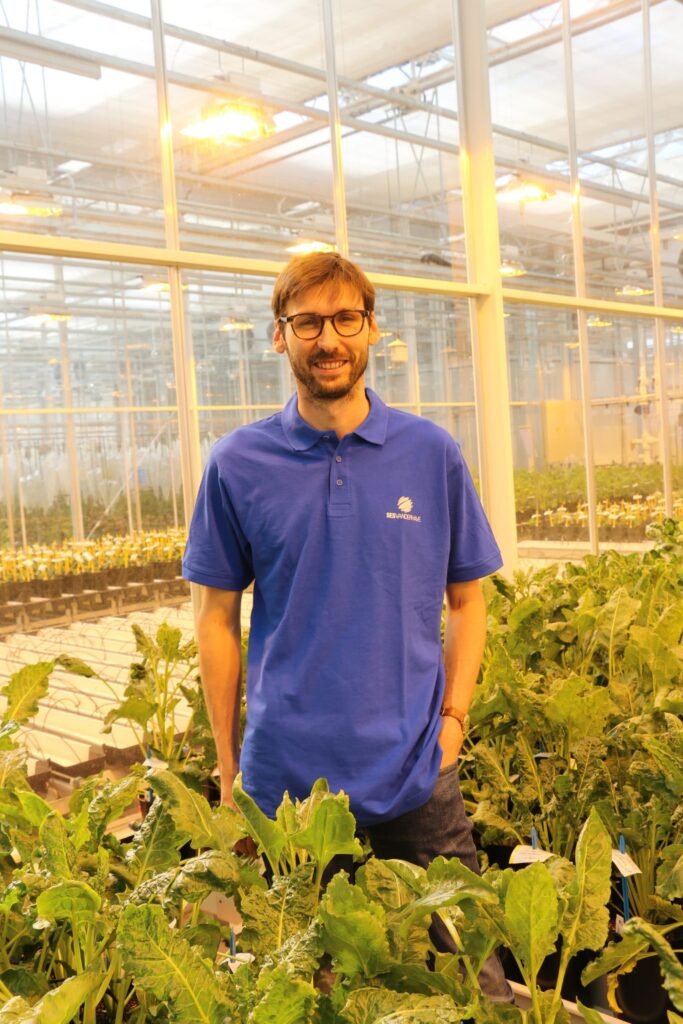
alcohol/bioethanol production, says Tschoep. “We follow the trends carefully and integrate the demands into our R&D pipeline.” He also underlines there certainly is a physiological limit to the capacity to store sugar in a sugar beet tap root. “We believe there is still a bit of margin to increase sugar content, but this will certainly be at the expense of overall sugar yield.”
The main targets of alcohol and bioethanol production are the same as for sugar consumption: sugar yield per hectare, resistances/tolerances against pests and diseases and yield stability says Stange, adding, “the absolute sugar content level is limited by physiological plant characteristics. Up to this level, the sugar content can be increased by breeding.”
COPING WITH CLIMATE CHANGE
For Tschoep, dealing with climate change is one of their major occupations. “At our company we follow an integrated approach using dedicated field trial platforms, targeted abiotic stress tests, predictive breeding methodologies using big data.”
Stange is testing the company’s genotypes under diverse environmental conditions in field trials across several years. “Thus, the genetic material is adapted to diverse environmental factors like heat, drought, but also wet and cool conditions. The best performing genotypes are selected for the target environments and by this adapted to changing conditions,” he adds.
Friehe adds: “In certain regions we observe less rainfall in summer months leading to drought induced yield penalties. Therefore, Betaseed is adjusting their breeding targets to overcome this challenge and there are promising genotypes in the pipeline. Additionally Betaseed is working on solutions beyond the genetics such as biologicals which will support the seeds in drought conditions. Furthermore, the service BetaCare is being rolled out which supports farmers when drought occurs during summer months. Another challenge includes tighter restrictions of plant protection means. Betaseed interpretes this as an opportunity by breeding varieties that require reduced application of plant protection products due to improved disease resistances.”
Verlaine says he and his colleagues are working on a better heat and drought stress tolerance in their varieties.
YIELD INCREASE
“We observe a yearly yield increase by up to 2% of which half is derived by our breeding progress. The other half is gained by improved techniques and knowledge of growing and production. Betaseed’s target is to obtain a similar yield increase between all producers despite challenges such as Rhizoctonia” says Friehe.
Stange states that depending on the breeding target, progress in sugar yield increase can be up to 2%.
Loock says that over the last few decades the sugar yield from sugar beets has been significantly increased. “Research confirms that about 50% of such increase can be attributed to sugar beet breeding. The annual yield progress which is best demonstrated in official variety trials under standardized agronomic practices continues to be 1.5-2% per annum. This also holds under changing environmental conditions. Research does not yet indicate that a physiological limit has been reached. Nevertheless, to make use of the remaining potential it appears necessary to apply all available breeding techniques as yield development is a complex process and multiple processes in sugar beets have to be targeted.”
Tschoep agrees and says their yield increases are around the same number. “Over the last years we see that yield potential increases by 1-2% annually, which has been confirmed by sugar beet institutes in Europe,” he adds.
REGIONAL DIFFERENCES
Verlaine states yield is strongly influenced by the agricultural practices, water management, pests and diseases in the MENA countries.
Stange states the yield increase is closely linked to the improvement in the tolerance and resistance levels. “A strong focus on the improvement in tolerance or resistances is slowing down the progress for yield. However, under strong infection, highly tolerant or resistant genotypes reach higher yields compared to susceptible genotypes.”
Tschoep says there are regional differences, “especially in regions where higher pressure of plant pests and drought, yield increases are lower than in other areas.”
When it comes to regional differences, Friehe says you have the chance to offer a resistant variety to a specific pest or disease, which was not available before.
BREEDING FOR THE ABOVEGROUND MATERIAL
Stange says that in the past, sugar beet leaves were used for animal feed. During the last years, this is no longer the case. “We don´t breed especially for this use.” Friehe agrees and is also not breeding for this purpose.
Tschoep says that they have looked extensively into this subject and see that variation within e.g. protein and fiber content exists in their germplasm which they will certainly exploit.
MUST-HAVE RESISTANCES
Loock mentions that resistance breeding is a key area of the sugar beet breeding activities at his company. “Our company works on the economically most relevant diseases like Rhizomania,

Cercospora, Rhizoctonia, Nematodes and Aphanomyces/Fusarium plus several more. Next to the initial resistance development, it becomes more and more relevant to secure the sustainability of resistances.” As the example of Rhizomania has shown, pathogens change and adapt over time and are able to overcome existing resistances (AYPR strain). He says one way to overcome such situation is to broaden the genetic resistance base as it was done with RZ 2.0, a KWS technology which combines two Rhizomania resistance sources.
Tschoep says there are a broad range of pests and diseases are becoming more and more important: Cercospora beticola, beet cyst nematodes and strong Rhizomania are important targets in our breeding programs, alongside Rhizoctonia, Aphonomyces, Fusarium. “With the recent ban of NNI, pests become more of a problem, especially aphids transmitting diseases such as virus yellows became an integral part of our breeding work.”
After the ban of the neonics, Friehe says Yellow Virus breeding is one of the hot spots, but also Rhizomania (+AYPR), nematodes, Cercospora, Rhizoctonia, Aphanomyces, Macrophomina, Stemphylium betae. “In addition, insects also become more and more of importance like beet moth or diseases transmitted by leaf hoppers like Syndrome basse Richesse (SBR).”
Stange states their main focus is on Rhizomania, Heterodera schachtii, Cercospora leaf spot and Virus Yellows, with Verlaine focussing on Cercospora beticola, beet cyst nematodes, Rhizoctonia, and root knot nematodes.
HOW TO IMPROVE RESISTANCE LEVELS?
KWS has just recently presented its latest developments for next-generation Cercospora-tolerant varieties at the 77thIIRB (International Institute of Sugarbeet Research) Congress. “The relevance of these varieties is enormously high as the pressure of Cercospora increases year-by-year,” says Loock. While available fungicides lose efficacy or are banned and no new products enter the market, the disease moves from the South of Europe to the North making this old foe a threat again. “As KWS has identified new sources of resistance and combined them in top-performing varieties, farmers will soon have a tool in hand to effectively cope with the increased Cercospora pressure. The next-generation Cercospora-tolerant varieties combine highest resistance with top yield performance, i.e. varieties show no relevant yield gap under non-infestation,” he adds.
“We are improving the resistance levels for the main diseases by selecting genotypes which reach a defined threshold per disease by testing with molecular markers, in bioassays and field trials,” says Stange.
For Tschoep’s company, the main sugar beet diseases are Rhizomania, Rhizoctonia and beet cyst nematodes which can be effectively controlled by current varieties. “The levels of resistance against leaf diseases such as Cercospora leaf spot will need to be elevated in the future due to a fungicide resistance, non-availability of new PPPs, but also due to the socio-economic context. Our company has already placed varieties with strong resistance to Cercospora leaf spot on the market and we are confident to be able to further improve the resistance levels,” he adds.
NEW DISEASES
There are diseases which have increasing pressure like Rhizomania and Cercospora says Stange. “In a way ‘new’ diseases are Virus Yellows, since it was covered by chemical seed treatments in the
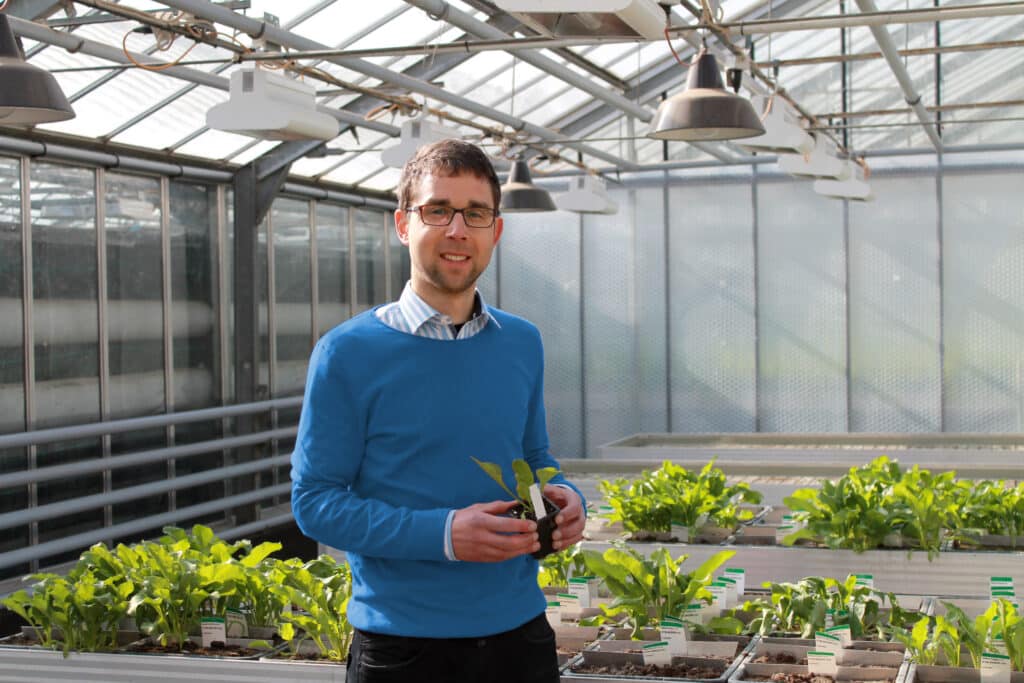
past and the so-called ‘syndrome “basses richesses”’ (SBR) which occurred 20 years ago in France and came back during the last 3 to 4 years to Switzerland and Germany.”
Tschoep agrees: “All diseases we see today have been present already for a long time. However, climate change, less input of PPPs and changes in agricultural practices enhance the occurrence and severity of known diseases. SBR, caused by an protobacterium and transmitted by an insect is currently spreading rapidly due to changes in climate.”
Verlaine says they see that root knot nematodes occur mainly in Egypt since a few years.
Friehe’s company is permanently searching for new resistances. “An example are our ‘Multisource’ varieties which combine Rhizomania resistance against different Rhizomania strains such as the very aggressive APYR strain. In combination with further resistances like nematode tolerance these varieties bring a significant contribution to the competitiveness of sugar beet production.”
LESS TOOLS FOR THE FARMER
Tschoep says their breeding programs have changed significantly with respect to the pressure on PPPs as this trend was partly foreseeable. Some decisions came rather fast and this still poses big challenges to the speed of variety development.
“New weeding technologies or drilling systems can also have impact on the variety choice, states Friehe.” A fast and high emergence with good ground coverage becomes, again, of more importance, beside the fact that the general leaf healthiness has to be improved quicker than expected.”
Loock underlines that the pressure on crop protection products has a significant impact on the activities of his company. “KWS works on tolerances against virus, insects and fungi which can replace and reduce the use of certain agro-chemistry in the future.” He says his company takes its responsibility for the environment seriously. It develops and implements comprehensive stewardship measures related to its products which cover e.g. weed resistance management.
Stange believes the consequence for their strategy is that they focus more and more on tolerance/resistance breeding. “We had and have an increasing capacity which we invest in breeding for tolerance/resistance characteristics.”
TOLERANCE TO ABIOTIC STRESSES
Tschoep says that they are working on abiotic stresses in general and the most important breeding targets are drought and heat stress. “Luckily, genetic diversity is vast in sugar beet which enables us to find such characteristics in wild germplasm.”
Both Friehe and Stange indicate that they are breeding on abiotic stress tolerance.
And Verlaine adds that drought, heat and salt stress are widespread in the MENA countries, so one

of their major breeding efforts is to integrate such tolerances in their varieties.
INVESTMENTS TO DEVELOP A NEW SUGARBEET VARIETY
Stange indicates that it takes them about 8 to 10 years to develop a new sugarbeet variety without the time for registration. Friehe concurs and shares that with the currently allowed breeding technologies it takes more or less 10 years to develop a new variety. Tschoep adds that about 15% of their annual turnover is invested into variety development.
KNOWING WHAT THE GROWERS WANT
Loock says their company is close to farmers. “This is not only because of its heritage, with the founder of KWS first of all being a sugar beet grower, and its own farming business which still exists today at various locations, but most of all because of its global team which is closely connected to the farming community,” he adds. “This proximity to those who use our varieties and seeds, puts KWS in a position to understand farmers’ needs. In combination with thorough market analysis, both political, technological and regulatory developments, we can anticipate what type of products are required to ensure profitable sugar beet cultivation in the future. Within the company a close collaboration and efficient processes between all relevant teams from market to breeding & research to production allow KWS to effectively tun market demand into the development of ‘the right products’.”
Verlaine states KUHN & Co is present with local agents on the markets who are in very close contact with customers and local sugar beet institute. “Furthermore, Kuhn & Co is making trial fields every year in collaboration with the sugar industry to evaluate the behavior and potential of new promising varieties. This approach is a good way to understand current and future needs of the farmers and sugar industry.”
Tschoep says his company has always taken the approach to work in close collaboration with all stakeholders in the sugar beet value chain. “This includes farmers, sugar industry, research institutes and governmental agencies. By organizing regular exchanges with our clients, we make sure that the products we develop fit the requirements of our customers.”
Friehe says permanent observations, discussions and an open ear to the customer “are absolutely necessary and is the key to evaluate what future breeding must include and what beneficial characteristics to incorporate. Furthermore, taking into consideration the changing environmental conditions as well as political changes directs Betaseed to identify customers needs.”
Stange states that one of their targets is to stay in very close contact to all stakeholders in the sugar beet value chain. “Especially for the direct farmers advise, we use tools like our “Beet Clinic” to research on a farmers level.”
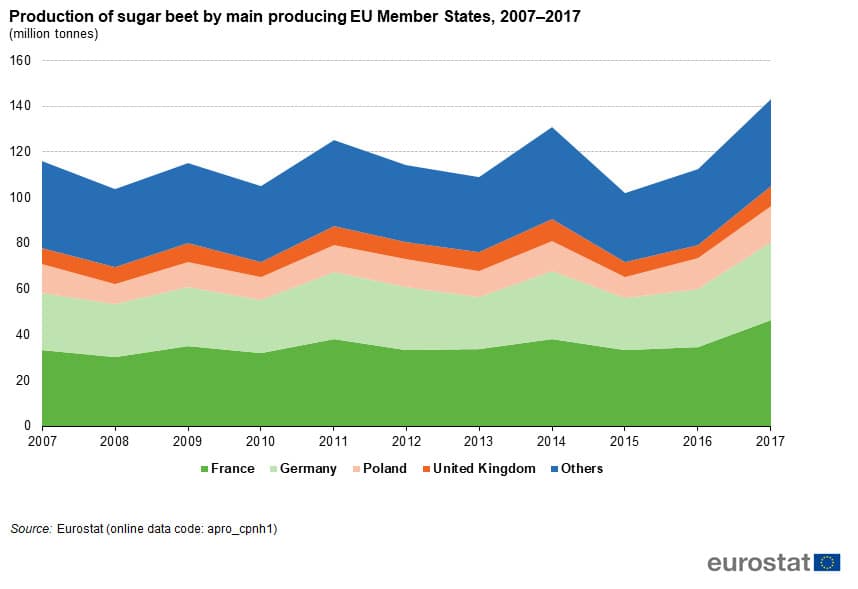
BIGGEST CHALLENGES
Tschoep says the biggest challenge, typically, is time. “The variety turnover is higher than in the past and as the sugar beet seed market is very competitive it is important to respond very fast to the requests of our customers and decision makers.”
Friehe concurs: “Yes, the biggest challenge is TIME. It is essential to provide the right product at the right time.”
For Stange, the challenges are the fast and unpredictable changing environmental aspects like political decisions, changing climate, new diseases, resistances against chemical plant protection.
SOURCES OF GENETIC DIVERSITY
It is essential for breeding companies to have access to different sources of genetic diversity if they want to effectively cope with future challenges. Loock says that in addition to its broad proprietary sugar beet germplasm his company applies the following approaches:
- We make use of the “breeder’s exemption”. Commercial varieties of competitors are used to increase the genetic variability of our company’s gene pools.
- We use genetic resources from gene banks or other institutions. After 2014 such access is implemented under the S-MTA (standard material transfer agreement).
“The access to genetic resources from gene banks/institutions is crucial to develop new traits like insect resistance, resistances to virus or fungi,” Loock says. “It is very important that the different institutions continue to work on Betato support the future development of sugar beet varieties which stand future challenges.”
Friehe uses international genebanks, USDA, and natural resources of Beta maritima in different countries to find genetic diversity, while Stange and his company are looking in genebanks and using natural resources of Beta maritimafor new diversity and resistances. And Tschoep shares that they have a large program that aims at identifying, conserving and exploiting genetic diversity. “Although we are content with our achievements, we are constantly searching for more genetic diversity,” he adds.

ACCESS TO NEW GERMPLASM
“We still believe that the access to new germplasm is possible, but the requirement for additional administration has been and is certainly a burden,” says Tschoep. “In some countries the rules and regulations under the Nagoya Protocol have not yet been clearly implemented which leads to some uncertainties.”
Loock’s company acts compliantly and implements all relevant procedures like S-MTA when it comes to accessing genetic resources. “The new regulations have increased complexity of processes and created some uncertainty for the development of varieties. Feeding back material to the original institutions for further development of material almost impossible. The new legislation also strongly restricts the use of genetic resources from certain countries.”
INNOVATION PIPELINE
Friehe indicates that plant breeding nowadays is a numbers game. “High throughput technologies as well as marker assisted selection is key . Today big data analysis and mathematical predictions are essential to succesfull plant breeding.”
Loock says his company works intensively on the development of virus yellows tolerant varieties which farmers in Europe will require soon to profitably grow sugar beets after the ban of neonicotinoids in sugar beet seed treatments.“The key viruses are Beet Mild Yellowing Virus (BMYV) and Beet Yellows Virus (BYV). They are transmitted by aphids that could earlier be effectively fought by the neonicotinoid seed treatments.” He adds his company engages in digital innovation which adds value to sugar beet cultivation. In cooperation with the University of Göttingen and the IfZ (German Institute for Sugarbeet Research) the company runs a ‘reality-check’ in 2020 of various weeding robot technologies in field trials at one of its company farms.
Verlaine states, certainly, the resistance to root knot nematodes is in their innovation pipeline. “We have successfully registered a new variety in Egypt in 2019 which offers the farmers a good solution to control this devastating disease.”
“The intensive use of our new phenotyping robotic platform “phenofieldbot” allows us to deeply analyse the field emergence, plant youth development, and the post emergence mortality. Which are all topics with growing importance due to the ban of fungicides in seed treatment. Thus, we have a tool to understand processes, breed for tolerances, and select benefical genotypes,” says Stange.
NEW PLANT BREEDING METHODS
New breeding methods is an umbrella term for new methods of plant breeding that create very precise changes and variability in plants. Their precision and efficiency set them apart from conventional breeding methods such as crossing, selection and traditional mutagenesis using chemicals or radiation. This term includes: agroinfiltration, cisgenesis, CRISPR/Cas, ODM (oligo-directed mutagenesis), RdDM (RNA-dependent DNA methylation), SDN (site-directed nucleases), TALENs and ZFNs (zinc finger nucleases). The regulatory landscape for new breeding methods, and specifically for genome editing (GE) is highly diverse. While the EU considers all GE technologies to be leading to a GMO (ruling of the European Court of Justice in 2018), other parts of the world pursue a differentiated approach’.
Loock says the stability and simplicity of use offered by new breeding methods allows unique possibilities. They can speed up the development of new sugar beet varieties significantly by requiring less generations and plants to achieve a marketable product. “New breeding methods are a tool(kit) – to create new genetic diversity, and to use existing genetic diversity more efficiently. It remains essential for breeders to “understand their targets”. I.e. breeding companies continue to invest in knowledge about the DNA sequences which are responsible for specific traits following the existing rules for regulation. Just with such understanding they will be able to effectively apply new breeding methods.”
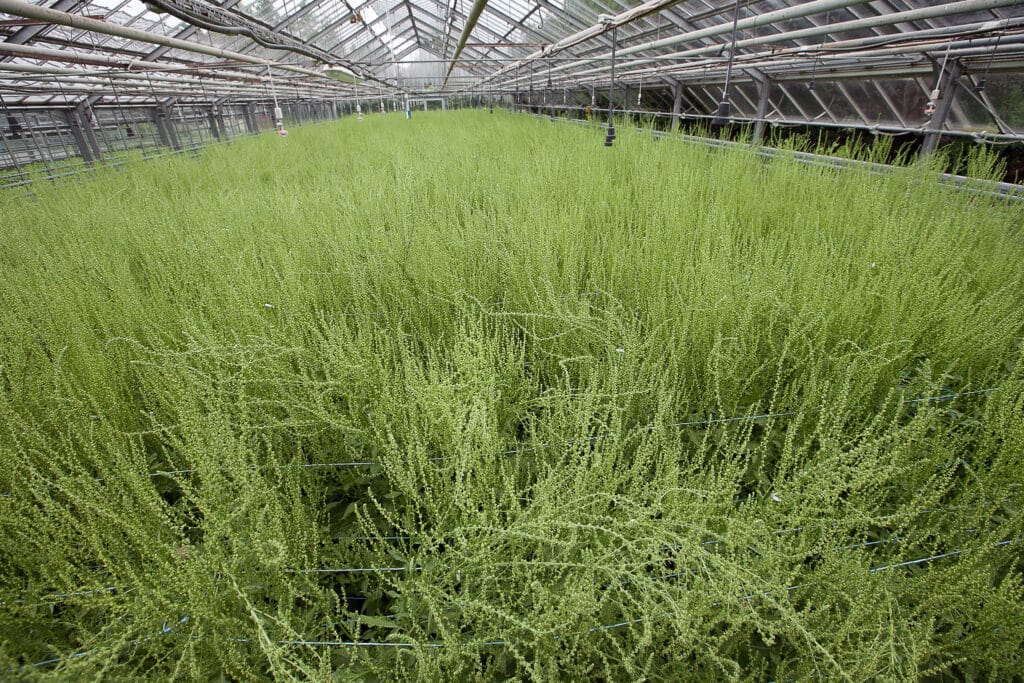
According to Tschoep, as in other crops, the new breeding methods surely provide a benefit in sugar beet breeding. “They represent a fast and easy tool to reliably create genetic variation that may occur naturally already. New breeding techniques would speed up the time until variety release as the variation does not have to introgressed into elite breeding lines. Unfortunately, the current regulation new plant techniques or plant breeding innovation are regulated as GMO in Europe,” he says.
Friehe agrees and admits that new breeding methods allow for a quicker market response due to reduced breeding times and therefore respond more swiftly to customer needs.
Stange confirms that new breeding methods are one tool in the plant breeding methodology that can fasten the breeding process. Therefore, the biotech department of Strube is working in this field of new breeding techniques.
GROWTH MARKETS
“Currently the main growing market for our company is for sure Egypt where the beet surface area is increasing since the last 5 years,” says Verlaine. “Moreover, a new sugar factory is started in 2018 and there is a new mega project for a sugar beet factory with a daily capacity of 30,000 tonnes. It proves to us that Egypt believes in the future of sugar beets.”
Friehe sees that Europe is currently under pressure, and he expects a further consolidation.
In addition, he observes a strong growth in other markets like China, Middle East and Africa, where many new factories are created however, he questions how sustainable this growth is since the yield levels are considerably lower than in Europe while production costs are often higher. Therefore, Betaseed still considers Europe as well as the US as their core market
“The main growing markets are in Asia and Africa, where especially in Egypt new sugar factories are bulit in the desert. In contrast, we see that the acreage in the EU will probably stay stable during the next years,” says Stange
Tschoep’s company expects further growth in Egypt, India and Asia, especially in cane producing countries. “Water will become scarcer, and sugar beet is four times more water efficient than cane in producing 1 kg of sugar,” he says.
Loock states KWS expects the acreage to stay overall stable in the mid-term period. “The EU sugar industry has learned its lesson from the domestic price decline during the last two years which was a consequence of a significant post-quota production increase combined with a difficult export environment,” he says. “In line with the current developments, KWS foresees the EU sugar companies to aim for a balanced supply and demand situation in the coming years which will stabilize the acreage at 1.6/1.7 million ha.”
Editor’s Note:
Strube D&S GmbH is one of the leading international companies in plant breeding. The headquarter is in Söllingen, Germany. The company’s history stretches back to the year 1877. Today Strube supplies seeds for sugar beet, wheat, sunflowers, food peas and sweet corn in more than 30 countries worldwide. The company’s research and development departments use modern technologies to ensure an efficient and highly innovative product range.
KUHN & Co International B.V. is a Dutch company, situated in Rilland, with an experience of more than one century in breeding and production of sugar beet seeds. Kuhn & Co is specialized in the development of sugar beets for regions in the MENA countries (North Africa -Middle East), and in Asia as well.
SESVanderHave is a leading global player in the sugar beet seed sector, that specializes in every aspect of sugar beet seed production, from the development of new and more resistant varieties right through to the final blue seeds. Every year, SESVanderHave sells over one and a half million units of one hundred thousand seeds each. Worldwide, SESVanderHave sells 360 varieties in more than 50 countries. Each variety is developed for the needs of individual markets all over the world.
Betaseed is the leading sugarbeet breeder from North America and a strong partner to growers and industry partners around the globe. Betaseed’s objective is to make sugarbeet growing easier and more productive by providing high yielding sugarbeet crops and tolerance packages in exceptional quality and by supporting customers with new impulses, tools and concepts beyond seed. Customers trust Betaseed to provide them with knowledge, variety performance and timely responses to technical operating questions in order to achieve the highest possible revenue for their operation.
KWS is one of the world’s leading plant breeding companies. A company with a tradition of family ownership, KWS has operated independently for more than 160 years. It focuses on plant breeding and the production and sale of seed for corn, sugarbeet, cereals, rapeseed, sunflowers and vegetables. KWS uses leading-edge plant breeding methods to increase farmers’ yields and to improve resistance to diseases, pests and abiotic stress. To that end, the company invested approximately EUR 200 million last fiscal year in research and development.





